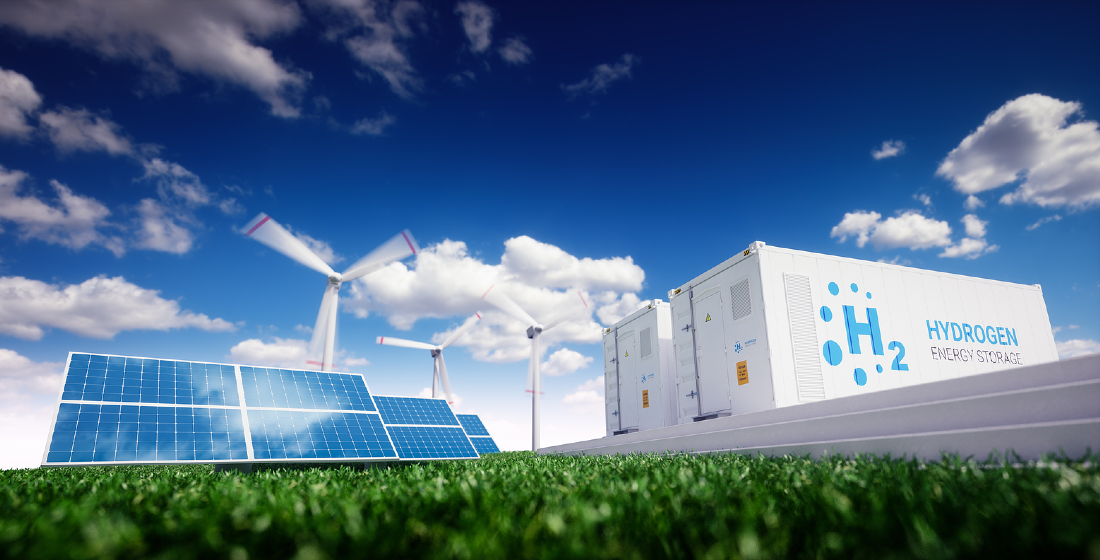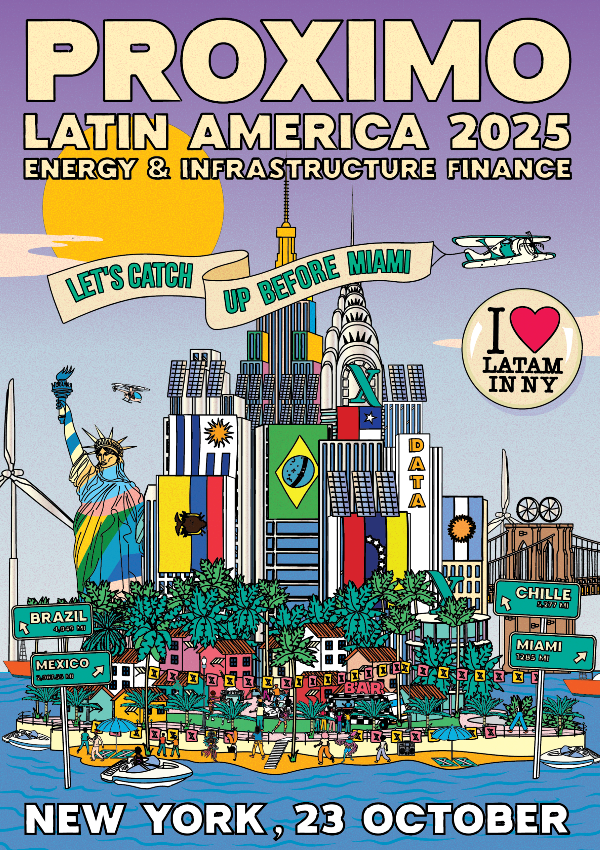Proximo Weekly: Bid Window 5 – cracked and not what it was cracked up to be
The first solar projects from South Africa’s Bid Window 5 have reached financial close. It’s progress – but not what was expected.

The South African energy sector manages to combine a desperately severe electricity generation shortfall with fairly consistent renewable energy deal flow. The recent project financing of the 273MW Grootfontein solar PV portfolio illustrates this trend perfectly, as a highly successful transaction that sits within a tortuous procurement programme that is habitually underdelivering.
The projects are known as Grootfontein PV1, Grootfontein PV2, and Grootfontein PV3 and are sponsored by Scatec (51%), H1 Holdings (46.5%), and Grootfontein Local Community Trust (2.5%). To be located in the Western Cape province, the projects form part of Bid Window 5 of South Africa's Renewable Energy Independent Power Producer Programme (REIPPPP) and have 20-year PPAs with national utility Eskom. The PPA tariffs are indexed to CPI and the tariffs are adjusted at commercial close to account for changes in interest rates and exchange rates.
The projects are the first solar schemes from Bid Window 5 to reach financial close and have a combined capacity of 273MW. The financing comprises ZAR4.5 billion ($242.6 million) of senior debt provided by Standard Bank. Scatec is the EPC contractor and will provide O&M and asset management services to the plants. Construction is expected to begin in the first quarter of 2024.
Preferred bidders for Bid Window 5 were announced in October 2021 and projects were initially required to reach financial close within six months of the awards being made. Delays to regulatory approvals meant that this deadline was missed by all projects, most of which have also been affected by rising equipment prices. The Grootfontein projects were further delayed by Eskom changing the required scope of work for grid connection, which entailed an additional environmental approval process. The grid connection work will be carried out by the project and ownership of the grid connection infrastructure will be transferred to Eskom following completion.
The project sponsors were able to steer the project to financial close despite the immensely challenging market conditions that have affected renewables developers in most markets for the last two or so years. Supply chain constraints following the Covid-19 pandemic, an inflationary macroeconomic environment, and higher energy prices have led to a surge in the price of renewables materials. The cost of developing renewable energy projects began to tick up in 2021 and these cost increases were only exacerbated by Russia’s war in Ukraine. Even with costs now beginning to normalise to some degree, the IEA still forecasts that ‘the average LCOE for utility-scale PV and wind could be 10-15% higher in 2024 than it was in 2020’.
Bids for REIPPPP Bid Window 5 were submitted in August 2021, meaning that these projects have seen the worst mismatch imaginable between bid prices and actual EPC costs. Although REIPPPP tariffs are inflation-linked, no direct accommodations are made for variations in materials costs. Many of the Bid Window 5 tariffs are, therefore, based on 2021 materials/EPC prices and have little connection to current prices. This is, of course, unless developers locked in an EPC/equipment price when preferred bidders were confirmed, but EPC contractors and OEMs have become less willing to hold prices over long periods to avoid carrying the increased cost burden themselves.
In the case of the Grootfontein projects, the fact that Scatec is both a sponsor and the EPC/O&M contractor created a strong incentive to keep the cost of construction at a level that kept the project viable. Nevertheless, the project will not have been unaffected by solar panel price rises, regardless of whether these were absorbed by the projects, Scatec, or the solar panel supplier. The difficulty of keeping the projects bankable would almost certainly have been heightened by the project’s tariff, which at ZAR484.60 (c.$26.23)/MWh is highly competitive by international standards.
The financing is certainly an achievement for the sponsor group in light of the external factors that have threatened to damage the bankability of Bid Window 5 projects permanently. But while the resilience of the Grootfontein projects’ sponsors in bringing the projects to financial close is commendable, it belies the fact that the South African government’s energy procurement programmes are not producing the volume of power the country needs.
Although 2.6GW of capacity was awarded under Bid Window 5 in 2021, only around 1,057MW has reached financial close. The other deals that have closed are all for onshore wind assets and include a financing for the Brandvalley, Rietkloof, and Wolf Wind projects sponsored by a consortium led by Red Rocket, as well as a financing for an EDF-led consortium’s San Kraal and Phezukomoya projects and a separate financing for the consortium’s Coleskop project.
Multiple market sources have also raised serious concerns about whether other Bid Window 5 projects such as those sponsored by a consortium including Globeleq, Mainstream Renewable Power, AREP, and H1 Holdings will ever reach financial close. The prospects of other procurement rounds look similarly limited. The RMIPPPP emergency tender round has so far only seen the Kenhardt portfolio reach financial close and REIPPPP Bid Window 6 only awarded 1GW of solar PV capacity, as grid constraints prevented any of the intended 3.2GW of wind capacity from being allocated to bidders.
The Proximo perspective
If South Africa is to solve its current acute energy deficit, it needs an additional 6-7GW of installed generation capacity. This figure is closer to 18GW if it is to come from renewables, given the variability of renewable energy production. Around 22GW of coal power must also be decommissioned in the next decade to meet climate commitments. Taking these figures into account, it quickly becomes evident that the government’s efforts to secure renewable energy capacity are falling woefully short of what is required.
To be fair to the South African government, the REIPPPP scheme has delivered over 6GW of renewable energy projects since 2011. By insulating REIPPPP project tariffs from interest rate rises, the government has also circumvented the issue of rising debt costs that is plaguing other energy markets. In addition, the government’s liberalisation of South Africa’s energy market is leading to a wheeling project gold rush, with around 5GW of privately procured energy projects currently under development. This liberalisation has even led to longer tenors on debt raised for REIPPPP projects, as it is expected that many such projects will now sell power on a private basis following the end of their PPAs with Eskom.
Responsibility for the macroeconomic environment that has recently complicated renewables development cannot be laid at the feet of the South African government. However, it is still true that the REIPPPP and RMIPPPP schemes simply are not creating a renewables project pipeline that is anywhere near large enough to serve the country’s needs. While wheeling projects will augment the supply of renewable energy, they will not plug the enormous electricity generation gap on their own.
South African renewables projects remain attractive to an array of developers and have been financed by a sophisticated local lending market. But without greater political willpower, there will be insufficient bankable projects to solve an energy crisis that is bringing the South African economy to its knees.
Selected news articles from Proximo last week
NORTH AMERICA
US Ex-Im unveils longer repayment terms, flexibilities for climate projects
The Export-Import Bank of the United States will begin offering longer repayment terms and additional flexibilities for most transactions, including climate projects.
EUROPE
Bidding for Lithuania’s first offshore wind project completes
The Lithuanian National Energy Regulatory Council is expected to name Ocean Winds and Ignitis Renewables as provisional winners of Lithuania’s first offshore wind tender.
ASIA-PACIFIC
AMI Renewables to develop 1.2GW Lao wind farm
The Lao Government and AMI Renewables Quang Binh Investment Corporation have signed an agreement to develop a 1,220MW onshore wind project for $2 billion.
MIDDLE EAST & AFRICA
Cabinda Oil Refinery reaches financial close
Gemcorp, Africa Finance Corporation and Afreximbank have announced the financial close of the Cabinda Oil Refinery in Angola.
SOUTH AMERICA
Aguas Pacifico desalination project in Chile nearing close
A desalination project in Chile developed by Aguas Pacifico is nearing financial close, according to a source close to the deal.
The Proximo Intelligence subscription
Join our community of project finance professionals to get unrivalled access to unique analysis, market data and a global portfolio of expert industry events in the energy and infrastructure space. Click here to find out more





